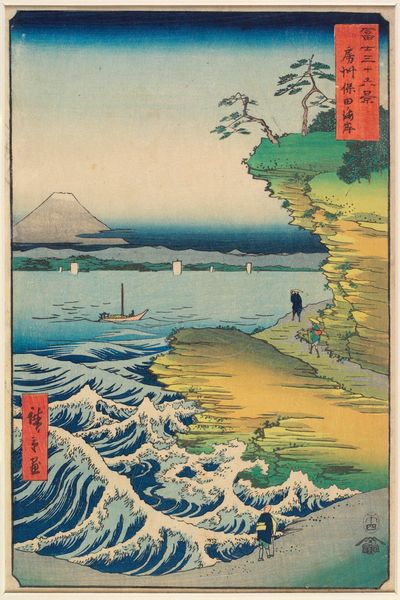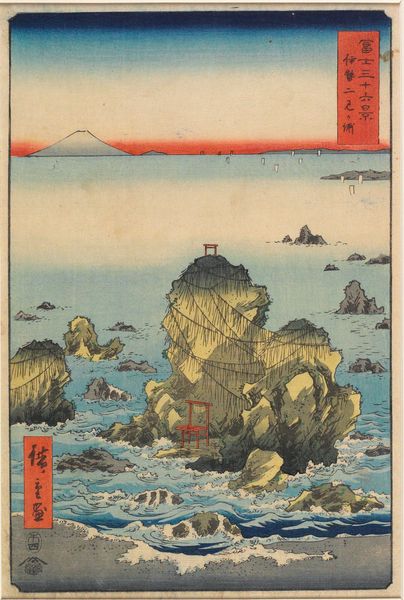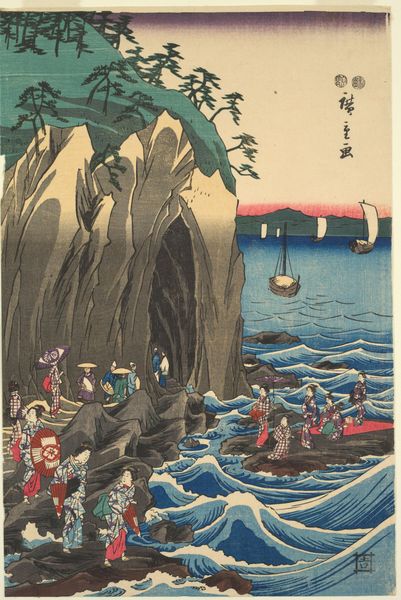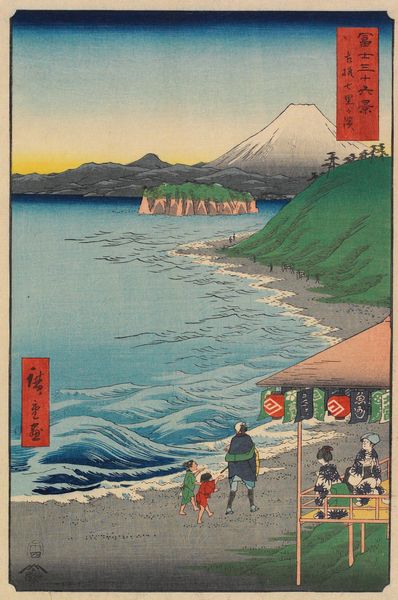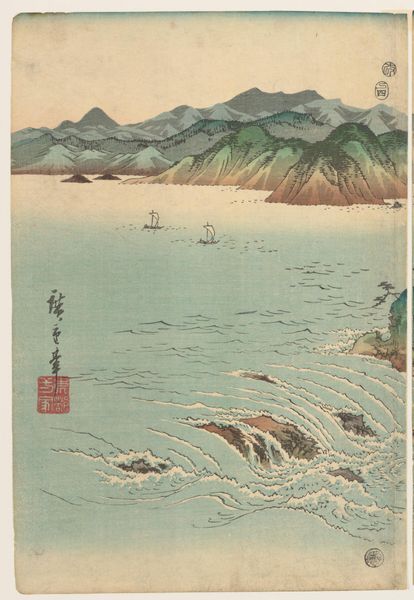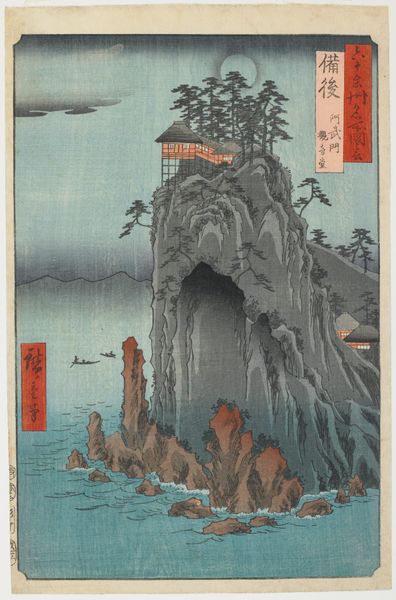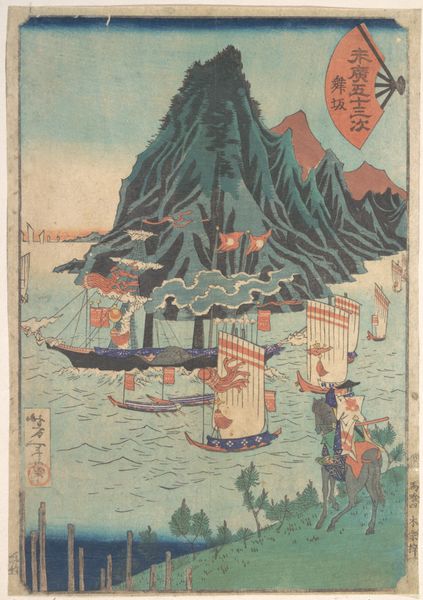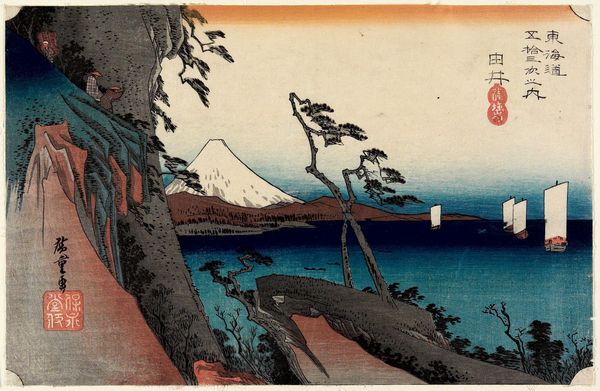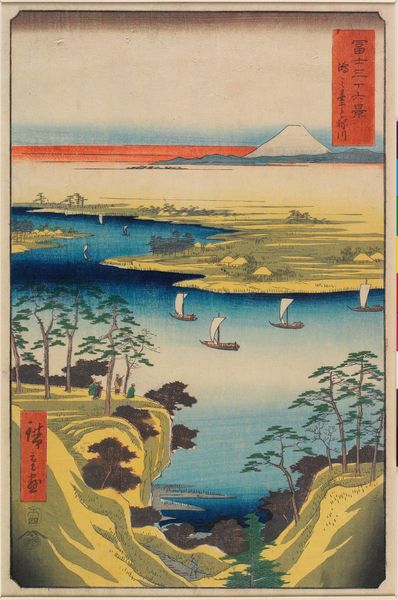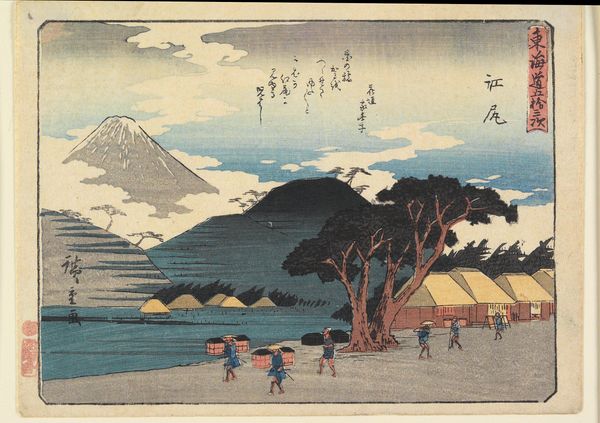
Pilgrimage to the Unveiling of Benzaiten at Enoshima in Sagami: Caves at the Main Shrine (SÅshÅ« Enoshima Benzaiten kaichÅ mÅde HongÅ« Iwaya no zu) c. 1851
0:00
0:00
Dimensions: vertical Åban triptych, left sheet: H. 37.5 Ã W. 25.2 cm (14 3/4 Ã 9 15/16 in.)
Copyright: CC0 1.0
Curator: What strikes me first about this vertical triptych by Utagawa Hiroshige is the dynamic composition. The rugged rocks, winding path, and crashing waves create a sense of movement that draws the eye across the scene. Editor: Yes, the rhythmic patterns of the waves and the laborious carving marks on the rock face certainly point to the intense labor involved in the making of this print. We see how social practices of pilgrimage are materially embedded in the landscape. Curator: Precisely. The pilgrims, dwarfed by the landscape, are visually linked to the distant Mount Fuji, suggesting a spiritual connection to the natural world through the act of pilgrimage. The interplay between land and water is also really compelling. Editor: It's important to remember these prints weren't just art objects, they were commodities produced for a growing urban audience. The woodblocks themselves, the pigments, the press—all part of a larger system of production and consumption. Curator: I agree, and in this work, the tension between the sublime landscape and the human element is particularly evocative. It gives us a glimpse into both the physical journey and the spiritual aspirations of the people. Editor: Indeed, the print reveals the labor and materials behind the image. This work provides insights into the cultural and economic forces at play in 19th-century Japan.
Comments
No comments
Be the first to comment and join the conversation on the ultimate creative platform.
